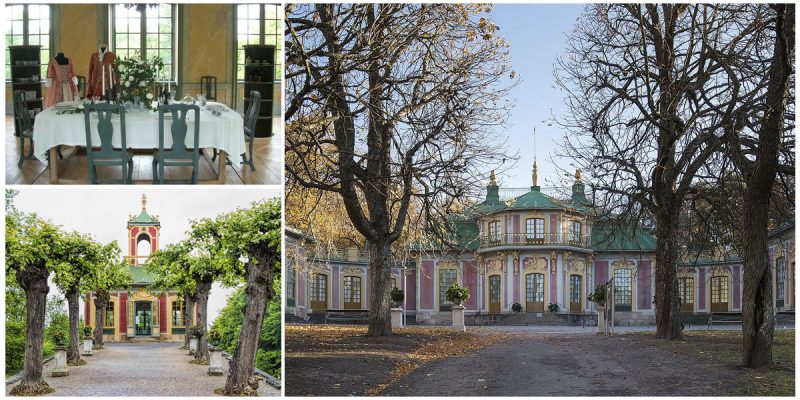Located in the beautiful grounds of Drottningholm Palace, Sweden, the Chinese Pavilion represents one of the best examples of rococo architecture in Europe.
Built between 1753 and 1769, and today is listed as one of Sweden’s Royal Palaces. It was made as a birthday present from King Adolf Fredrik to Queen Lovisa Ulrika and was inspired by the Chinese architectural style that was very popular at that time. On her birthday, the seven years old Prince Gustav, dressed as a Chinese mandarin, gave the queen the golden key to the palace.
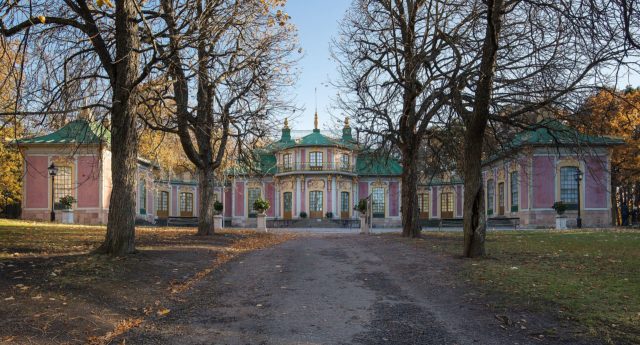
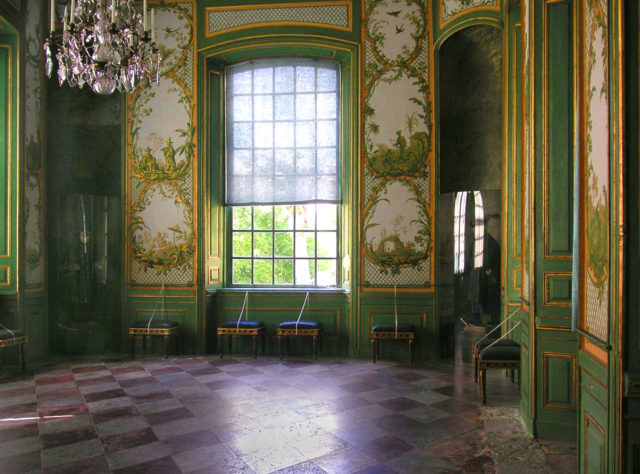
The first construction was a small timber building, probably built by the architects Carl Harleman and Carl Johan Cronstedt. Ten years later, the king wanted to create a bigger castle that would be better able to withstand the harsh Swedish climate, so he commissioned the architect Carl Fredrik Adelcrantz. This second building is the current structure and was built between 1763 and 1769.
The whole interior design work was supervised by the chief of the royal court, Jean Eric Rehn. At that time, Chinese-inspired architecture and decorative styling were the height of fashion, so Rehn created an interior in the Rococo style, but with an exotic oriental character. Many objects from China were brought for the interior including silk and porcelain.
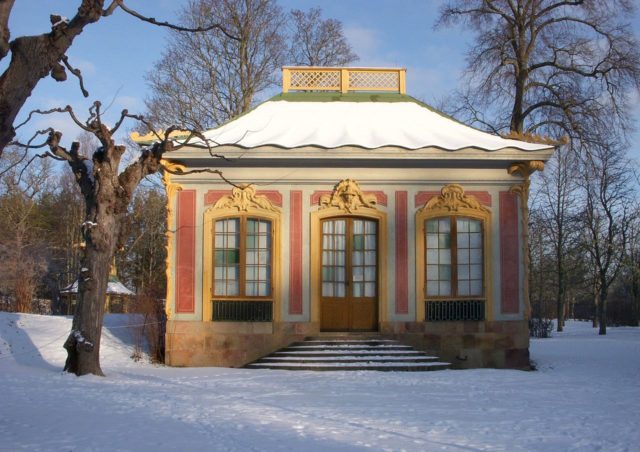
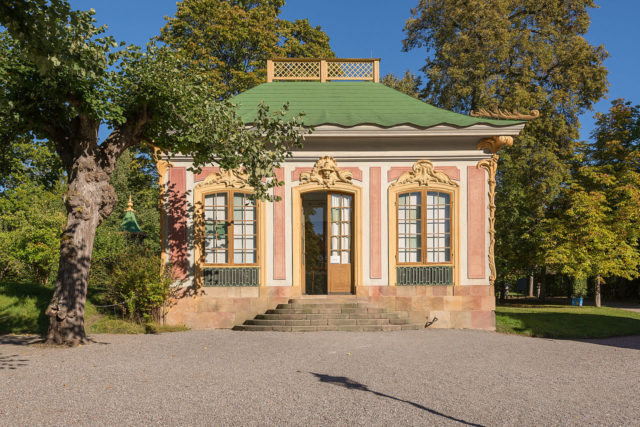
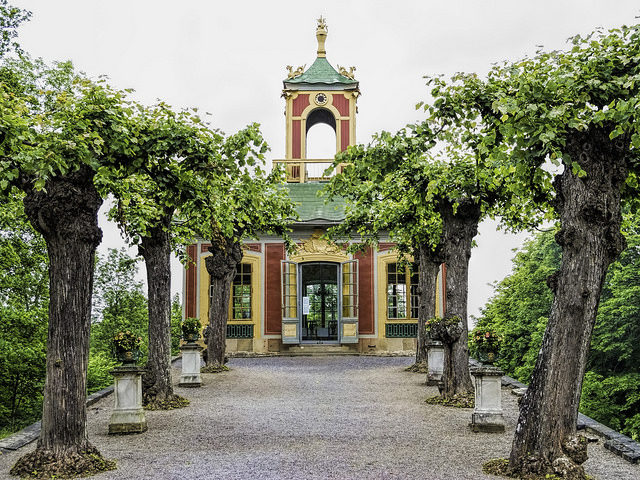
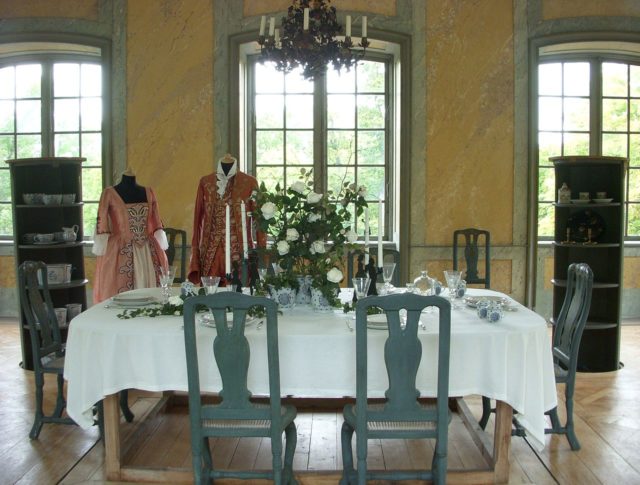
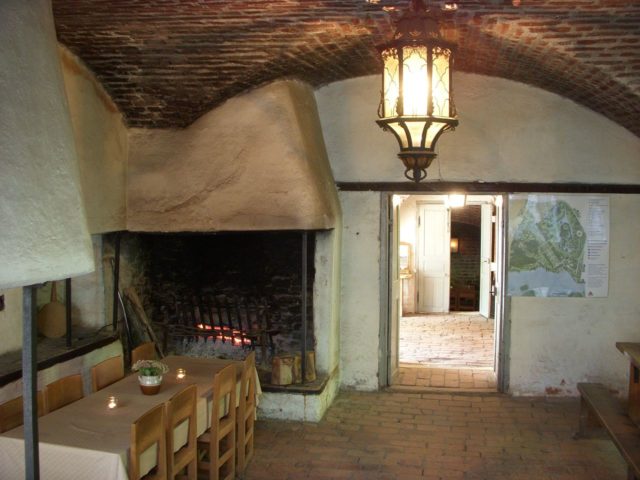
In Sweden, China and its culture became a great fascination, and every nobleman wanted to have something Chinese origin. They built entire rooms in Chinese style or had various objects in their houses. One of the most beautiful rooms in the palace is the Yellow Room which is covered with Chinese panels.
North of the pavilion, there are four houses, again designed in a Chinese style, and they are known as The Billiard, The Silver Chamber, the Adolf Frederick’s Studio, and the dining room called the Confidence. North of the dining room is the old kitchen of the palace.
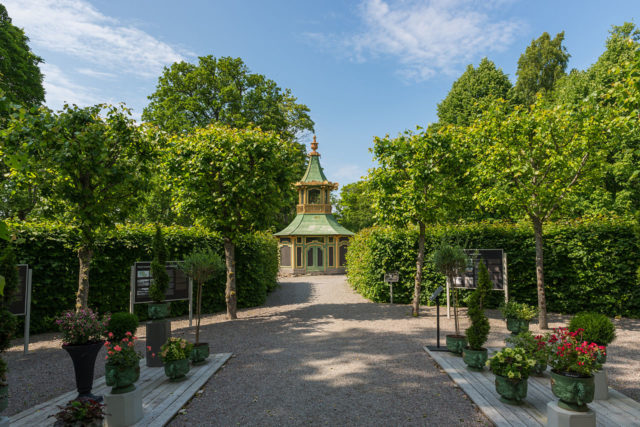
There were plans for a Chinese pagoda to be built during the reign of King Gustav III, but the King was assassinated, and it was never realized.
In 2010, burglars entered the pavilion and stole some of the objects which were considered to be irreplaceable. Up to today, none of the objects have ever been recovered. The burglars stole a green soapstone sculpture, a small teapot, a horn from a rhinoceros, and a wooden plate. The pavilion today is known as one of the country’s great treasures, and it is on UNESCO’s World Heritage List.
